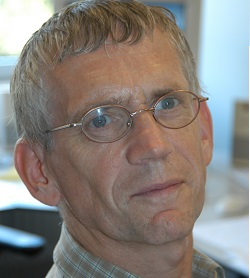Selected Papers from International Workshop of Energy-Open
A special issue of Energies (ISSN 1996-1073).
Deadline for manuscript submissions: closed (30 November 2017) | Viewed by 81314
Special Issue Editor
Interests: demand side management, smart grids; energy-autonomous regions; distributed optimization algorithms; embedded systems; low-power systems; control of storage systems; local heat distribution systems
Special Issues, Collections and Topics in MDPI journals
Special Issue Information
Dear Colleagues,
The International Workshop of Energy-Open will be held in University of Twente, Enschede, the Netherlands, 18–19 May 2017 (https://energy-open.nl/node/1).
Global warming, climate agreements, EU policies to reduce CO2 emissions and many national energy programs reflect the need to make our energy systems more sustainable. This process, called energy transition, entails a fundamental change of the energy system from a centralized system with electricity production mainly based on fossil fuels to a decentralized local system based on sustainable energy production based on e.g. solar, wind, tidal, hydro or geothermal sources. Other changes include the ongoing growth of the electricity consumption resulting from an electrification of transport (electric vehicles) and heating (heat pumps) resulting in an increasing integration between the different energy systems of electricity, transportation and heat.
The envisioned direction of the energy transition leads to drastic changes within the current energy system; e.g. larger parts of the energy generation will be based on fluctuating, non-controllable and hard to predict sources like wind and sun and the ongoing electrification will introduce large peaks in the consumption. To be able to ensure also in the future the stability of this energy system and the balancing of energy supply and demand without extremely extending the capacities of the underlying grids, the setup and the organization of our energy system has to be changed drastically. This includes different roles of stakeholders (e.g. consumers get prosumers), changing or new market structures and players (e.g., local (independent) micro-grids at community level and smart buildings/homes), changing end-user involvement and new technologies (e.g. storage and conversion between energy carriers).
Prof. Dr. G.J.M. (Gerard) Smit
Guest Editors
Manuscript Submission Information
Manuscripts should be submitted online at www.mdpi.com by registering and logging in to this website. Once you are registered, click here to go to the submission form. Manuscripts can be submitted until the deadline. All submissions that pass pre-check are peer-reviewed. Accepted papers will be published continuously in the journal (as soon as accepted) and will be listed together on the special issue website. Research articles, review articles as well as short communications are invited. For planned papers, a title and short abstract (about 250 words) can be sent to the Editorial Office for assessment. Submitted manuscripts should not have been published previously, nor be under consideration for publication elsewhere (except conference proceedings papers). All manuscripts are thoroughly refereed through a single-blind peer-review process. A guide for authors and other relevant information for submission of manuscripts is available on the Instructions for Authors page. Energies is an international peer-reviewed open access semimonthly journal published by MDPI.
Please visit the Instructions for Authors page before submitting a manuscript.
The Article Processing Charge (APC) for publication in this open access journal is 2600 CHF (Swiss Francs).
Submitted papers should be well formatted and use good English. Authors may use MDPI's
English editing service prior to publication or during author revisions.
Keywords
-
Decentralized energy management
-
Control of Storage in Smart Grids
-
Optimization algorithms for Smart Grids
-
Power quality in distribution grids
-
Prediction algorithms of renewable generation
-
Legislation for energy transition
-
User behavior
Benefits of Publishing in a Special Issue
- Ease of navigation: Grouping papers by topic helps scholars navigate broad scope journals more efficiently.
- Greater discoverability: Special Issues support the reach and impact of scientific research. Articles in Special Issues are more discoverable and cited more frequently.
- Expansion of research network: Special Issues facilitate connections among authors, fostering scientific collaborations.
- External promotion: Articles in Special Issues are often promoted through the journal's social media, increasing their visibility.
- Reprint: MDPI Books provides the opportunity to republish successful Special Issues in book format, both online and in print.
Further information on MDPI's Special Issue policies can be found here.





